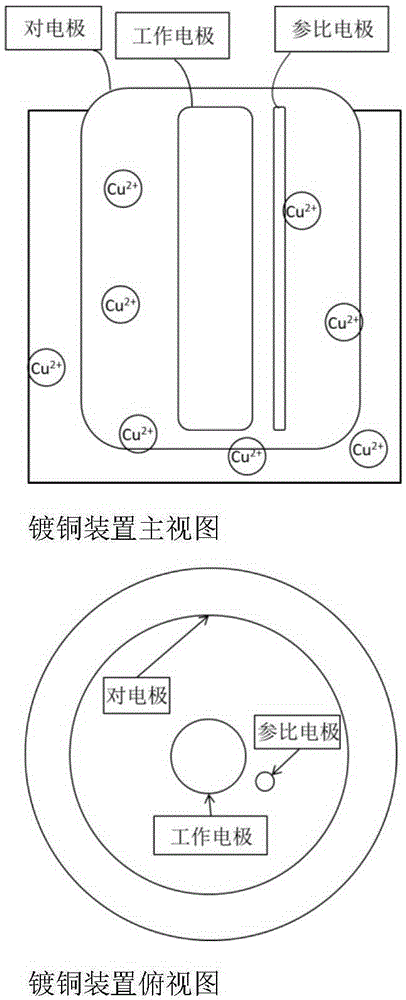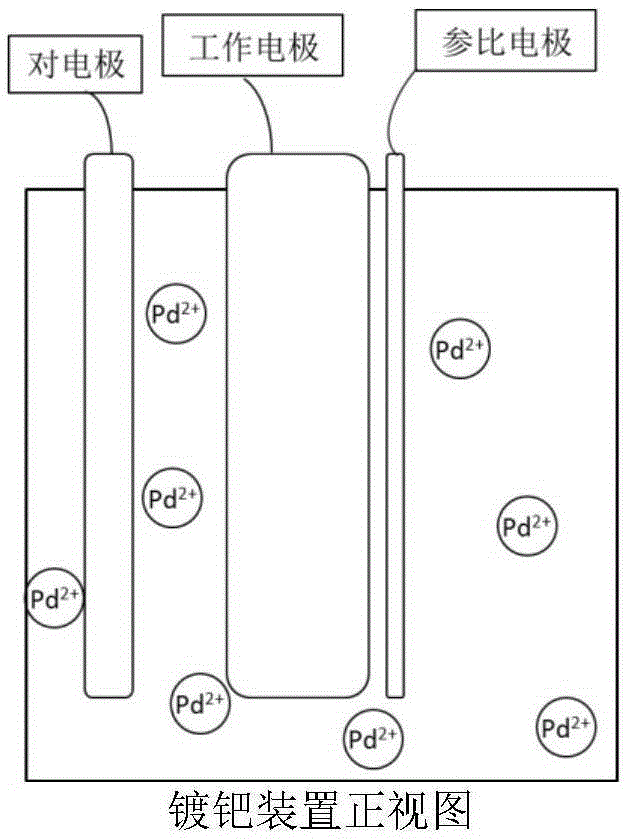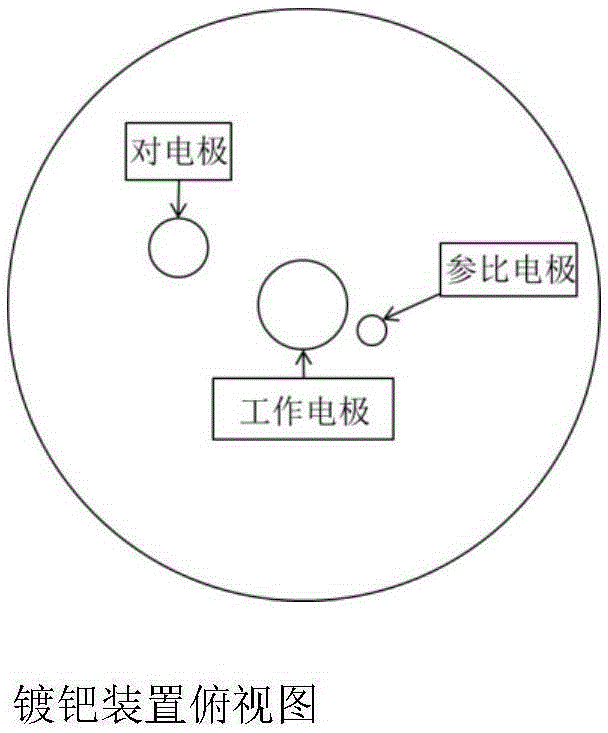Preparation method of palladium-copper alloy film with controllable components and thickness, palladium-copper alloy film and application
A technology of palladium-copper alloy and palladium film, which is applied to the preparation of palladium-copper alloy film with controllable composition and thickness and the field of palladium-copper alloy film and application, can solve problems such as difficulties, achieve accurate control, save production cost, high Effect of Low Temperature Hydrogen Permeability
- Summary
- Abstract
- Description
- Claims
- Application Information
AI Technical Summary
Problems solved by technology
Method used
Image
Examples
Embodiment 1
[0048] ECN1 porous ceramic material as support, 4μm thick Pd 50 Cu 50 Alloy film preparation
[0049] 1. Preparation of copper plating solution
[0050] Use HFA2004 analytical balance to weigh 30gNa 2 Dissolve EDTA in 400ml of warm water at 40°C-50°C, and record it as solution A for later use. Weigh 10g CuSO 4 ·5H 2 Dissolve O in 100ml of warm water at 40°C and record it as solution B. Add A to B under stirring slowly, the blue transparent solution produces a blue precipitate and becomes turbid. The reaction equation is:
[0051] Cu 2+ +2OH - →Cu(OH) 2 ↓Cu 2+ +Na 2 EDTA→CuEDTA+2Na +
[0052] Cu(OH) 2 +Na 2 EDTA→CuEDTA+2NaOH
[0053] Weigh 23g Na 2 CO 3 Dissolve in 100ml of warm water at 40°C. Record it as solution C, add C to B with slow stirring, the blue precipitate formed before gradually disappears, and the solution becomes clear again. Sonicate for 5 minutes to make the solution more uniform. Weigh 40mg C 10 h 8 o 2 Dissolve in 40ml distilled wate...
Embodiment 2
[0071] NJ1 porous ceramic material as carrier, 4μm thick Pd 47 Cu 53 Alloy film preparation
[0072] 1. Preparation of copper plating solution
[0073] Method is with embodiment 2.
[0074] 2. Preparation of Palladium Plating Solution
[0075] Method is with embodiment 2.
[0076] 3. Vector pretreatment
[0077] The NJ porous ceramic carrier tube is 67.90mm long, with an outer diameter of 12.50mm and an inner diameter of 8.05mm. First in Na 2 CO 3 Soak in the alcohol solution for 30 minutes to remove the oil on the surface. Then soak in deionized water, and vacuum wash at low pressure for 15 minutes to remove residual Na 2 CO 3 Alcoholic solution, after treatment, the carrier is white and bright. After that, dry it in an oven at 150°C for later use.
[0078] Activate the dried carrier, immerse in reducing agent (dimethylaminoborane), reduce for 3 to 5 minutes, rinse the carrier tube with distilled water, and then immerse in the mixture of palladium sulfate and bora...
Embodiment 3
[0087] ECN2 porous ceramic material as support, 5 μm thick Pd 45 Cu 55 Alloy film preparation
[0088] 1. Preparation of copper plating solution
[0089] Method is with embodiment 2.
[0090] 2. Preparation of Palladium Plating Solution
[0091] Method is with embodiment 2.
[0092] 3. Vector pretreatment
[0093] The ECN porous ceramic carrier tube has a length of 80.25 mm, an outer diameter of 14.00 mm, and an inner diameter of 11.05 mm. First in Na 2 CO 3 Soak in the alcohol solution for 30 minutes to remove the oil on the surface. Then soak in deionized water, and vacuum wash at low pressure for 15 minutes to remove residual Na 2 CO 3 Alcoholic solution, after treatment, the carrier is white and bright. After that, dry it in an oven at 150°C for later use.
[0094] Activate the dried carrier, immerse in reducing agent (dimethylaminoborane), reduce for 3 to 5 minutes, rinse the carrier tube with distilled water, and then immerse in the mixture of palladium sulfa...
PUM
| Property | Measurement | Unit |
|---|---|---|
| Tube chief | aaaaa | aaaaa |
| Outer diameter | aaaaa | aaaaa |
| The inside diameter of | aaaaa | aaaaa |
Abstract
Description
Claims
Application Information
 Login to View More
Login to View More - R&D
- Intellectual Property
- Life Sciences
- Materials
- Tech Scout
- Unparalleled Data Quality
- Higher Quality Content
- 60% Fewer Hallucinations
Browse by: Latest US Patents, China's latest patents, Technical Efficacy Thesaurus, Application Domain, Technology Topic, Popular Technical Reports.
© 2025 PatSnap. All rights reserved.Legal|Privacy policy|Modern Slavery Act Transparency Statement|Sitemap|About US| Contact US: help@patsnap.com



